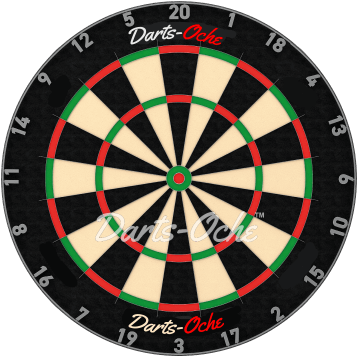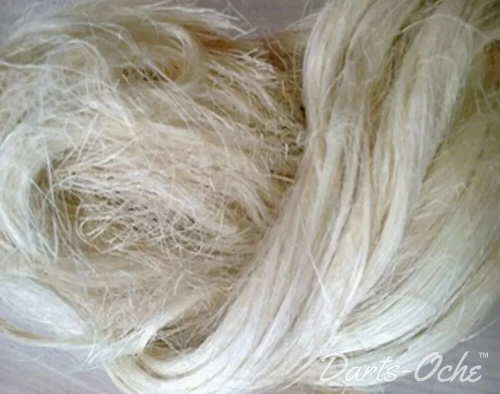London Dartboard
London Standard Dartboard / London Clock Dartboard
The standardisation of dartboards to the London, singles, trebles and doubles dartboard.
The London / Clock?
For decades, the standard dartboard that is used in the World Championships and other major and not-so-major sporting events has been referred to as a London or the London 'Clock' Dartboard. Indeed, some books reference the standard dartboard as a clock dartboard, but like many other things in history, including the 'hockey' / 'oche' ('throw line), this is a misinterpretation.
Why a London dartboard and why a clock dartboard?
The standard dartboard is not only referred to as a London dartboard but also referred to as a treble's dartboard. As you can see, the English like to give their twist on names and references in different parts of the country. The forerunners of the standard dartboard were the UK regional dartboards such as the 'Yorkshire' Dartboard.
Different regions in the UK had their preferred dartboard and dartboard setup. Not only did the dartboard vary in design, but the hanging height and throwing distance also varied. Some of the regional dartboards still survive and are still played upon, but many have been lost to history.

London (Standard) Dartboard
1920s Dartboards
In the 1920s, a push was made to standardise a playing dartboard. The dartboard is the one most played upon today, featuring single, double, and treble scoring segments and an inner and outer bullseye. At the time, it was referred to as the London dartboard, while in some quarters, it was referred to as the trebles dartboard, presumingly to distinguish the dartboard from similar dartboards that didn't have a trebles segment, i.e. Yorkshire and Kent dartboards. According to darts historian Dr Patrick Chaplin, the 'London' or 'trebles' dartboard wasn't an overnight success as it competed with the other regional dartboards nationwide.
1930s Dartboards
Until the early 1930s, dartboards in the UK were made from Elm or, in some cases, Poplar wood. These dartboards must be kept damp and immersed in water to heal the dart point holes and, more importantly, prevent cracking. The dartboards were removed from the water a few hours before play to allow excess water to run off the playing surface.
It seems the Manchester dartboard is the only regular regional dartboard still made in the traditional way using Poplar wood, as 1970s Dutch Elm Disease nearly wiped out the Elm trees in the UK. (Dutch elm disease is caused by the fungus Ophiostoma novo-ulmi, which elm bark beetles spread. It got its name 'Dutch Elm Disease' from the team of Dutch pathologists who researched the disease in the 1920s.)
Nodor Patent the New Sisal Dartboard
In the early 1930s, a London-based company 'Nodor' filed a patent for a new type of dartboard made from sisal. Before the sisal dartboards (sometimes referred to and marketed as bristle), 'Nodor' made dartboards using modelling clay. Ted Leggatt's invention of modelling clay was marketed as 'No-Odour', hence the name 'Nodor'. The modelling clay is more commonly known as 'Plasticine'.
Sisal is a plant with strong fibres mainly used to make rope and twine. A publican in Kent (South England), F T Dabbs, is credited for making the first dartboard from rope ends. Ted Leggatt refined the idea with Dabbs, and they for a penitent in 1932.
Sisal dartboards are made up of 'biscuits' of bound sisal fibres that are compressed and stuck to a backing board to form the dartboard's playing surface. The system has changed little over the years. Only the more recent high-end dartboards have a combination of a 'biscuit' sisal base with a top layer of seemingly unbroken or undivided areas that form the top part of the playing surface. These top-end dartboards eliminate the veins caused by the sisal biscuits' binding. Over the years, the binding has varied from a crape paper to plastic film, which has caused 'dead' areas, meaning if a dart directly hits the vein, it stands the risk of not penetrating the board and 'bounces' from the surface.

Although the sisal dartboard is longer lasting and doesn't require soaking, indeed, you can damage the dartboard beyond repair if you do. The cost to the average player was a downfall compared to the wooden equivalents.
No better material has been produced to make a dartboard for steel-tip use.
London 'Clock' Dartboard?
Lost in translation! Coming from London, I played darts in London pubs for many years, and I am used to the slag that many have used for numbers, scores and references to dartboards. In London, two main dartboards were more commonly used than others: the standard dartboard (singles, doubles and trebles) and the narrow fives.
The fives dartboard is made in two variations, one with narrow doubles and trebles, the other wide. The narrow version has doubles and trebles approximately half the size of a standard width, and the wide is a 'standard' width! Confusing to some, but the dartboards also have another name, the London Fives (narrow) and the Ipswich Fives (wide). Since there are two dartboards given the prefix of London and some playing of a fives dartboard, the word 'clock' dartboard was also introduced. However, I believe some have mistakenly referred to the 'clock' dartboard as the standard dartboard. However, as a clock face has twelve segments, like a five dartboard and not 20 like the standard, I believe some have misinterpreted the reference and have even illustrated the standard dartboard with a reference to 'the clock dartboard' or 'London Clock Dartboard'.

Having a number of historical dart books, some dating back to the 1930s, mistakes in illustration and references feature in several of them. The 'Clock' or London 'Clock' Dartboard should reference the London (narrow) Fives Dartboard. The standard is also known as a London Dartboard.
In a similar fashion, 'Oche', the throw-line, is a word again lost in translation. It is pretty easy to find that the throw line was called the 'Hockey'. This reference is shown in many books dating back to the 1930s and used in the News of the World individual Championships programs. It is again believed that a writer, probably not used to the sport, heard the 'Hockey' pronounced 'Oche' and printed it this way; hence it has become a feature of darts ever since. Oche has nothing to do with other references, nor did the word Hockey come from a mythical brewery beer crate called Hockey and Son.
Standard Dartboard
Although the standard dartboard was eventually adopted as the main dartboard throughout the country, the game spread worldwide in the 1940s war years. During some downtime, soldiers were given dartboards and other games, such as cards. The USA, Canadian, Australian and New Zealand Servicemen based in the UK also obtained a taste for the game when visiting English pubs. They took dartboards home with them, and the global phenonium began.
Standard Dartboards have been made from Wood, Cork, Plasticine, Coiled Paper, Sisal and Plastic if you count the soft-tip version of the sport.
Additional Reading...
If you would like to read some additional dartboard history and how MI9 used them in World War II, please visit one of my other dart websites, Darts501.com, and read the MI9 World War II Escape and Invasion Dartboard section.

